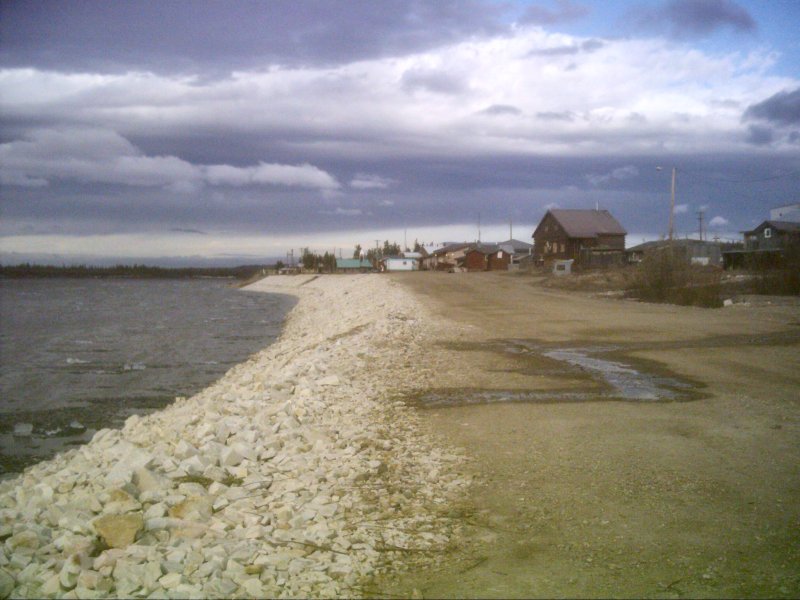

Old Crow on the Porcupine River
"I wanted to make a quick comment about the photo you used for Old Crow from Wikipedia Commons. All of that white rock on the shore is not a natural feature of the river. It was placed there in 2006 to try to halt the significant erosion of the river bank that was threatening to wipe out the current site of the community.
The large rocks were taken from the quarry at the top of Crow Mountain, at the end of the only road out of town.
The sample that I sent to you was taken from the river bank beyond the far bend in the picture. You should be able to see that the white rocks end abruptly just before that far bend.
I'm worried that a picture that features rocks trucked in from elsewhere on the river bank of Old Crow might take away from the site's focus on naturally occurring sand in various places on the planet. It's obviously your call regarding which photo you want to use for Old Crow, but I thought I would give the "back story" as to why the shore in your photo appears so unnaturally white and rocky.
On another note, I loved your photos for the site of the Nenana River (Denali) sample. That is a lot like what the riverbed and shores looks like up here. The close-up of the sand samples from Denali surprised me, as they seem so different from the photo of a typical northern river." S. Climie
" Twenty years ago, I
visited Old Crow (not common, as you cannot drive there!) with a small group of
friends. We were part of a group of folks working hard to achieve permanent
protection for ANWR, and the Gwich'in
people in Old Crow were joined in our efforts. The caribou that they rely on are
seriously at risk if the refuge were opened for oil development.
I have memories of
colorful "sunsets" that lasted for hours, drinking water from the Porcupine
River, seeing children play outside all night, and the smiles of people watching
a bunch of California vegetarians trying to politely eat moose brain soup!
Now that I am an earth
science teacher, the memory of that trip that I discuss the most was of sitting
on the shore of the Arctic Ocean at midnight (waiting for our AWOL bush pilot to
return) watching the sun dip down, and, instead of setting, continue in an arc
along the sea ice. Amazing.
I have thought about
the village often, and wonder how all of the children that we met there are
doing.
Sadly, ANWR is still not protected, but at least has not been developed, and I
still believe there is hope.
Mahsi cho (thank you) Charlie, for sharing your sand project!"
Shirley A.
|
The sample was contributed by the Principal from the Chief Zzeh Gittlit School. Click on the thumbnails under the images for high resolution versions.
Return to Canadian Sand
Return to Countries
Return to Home